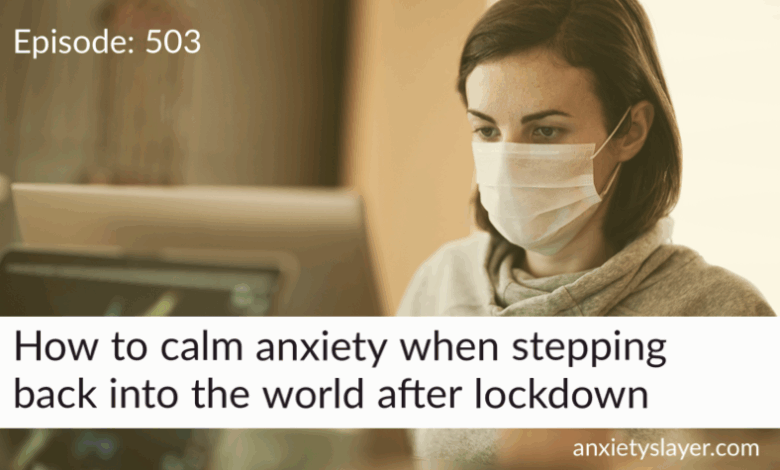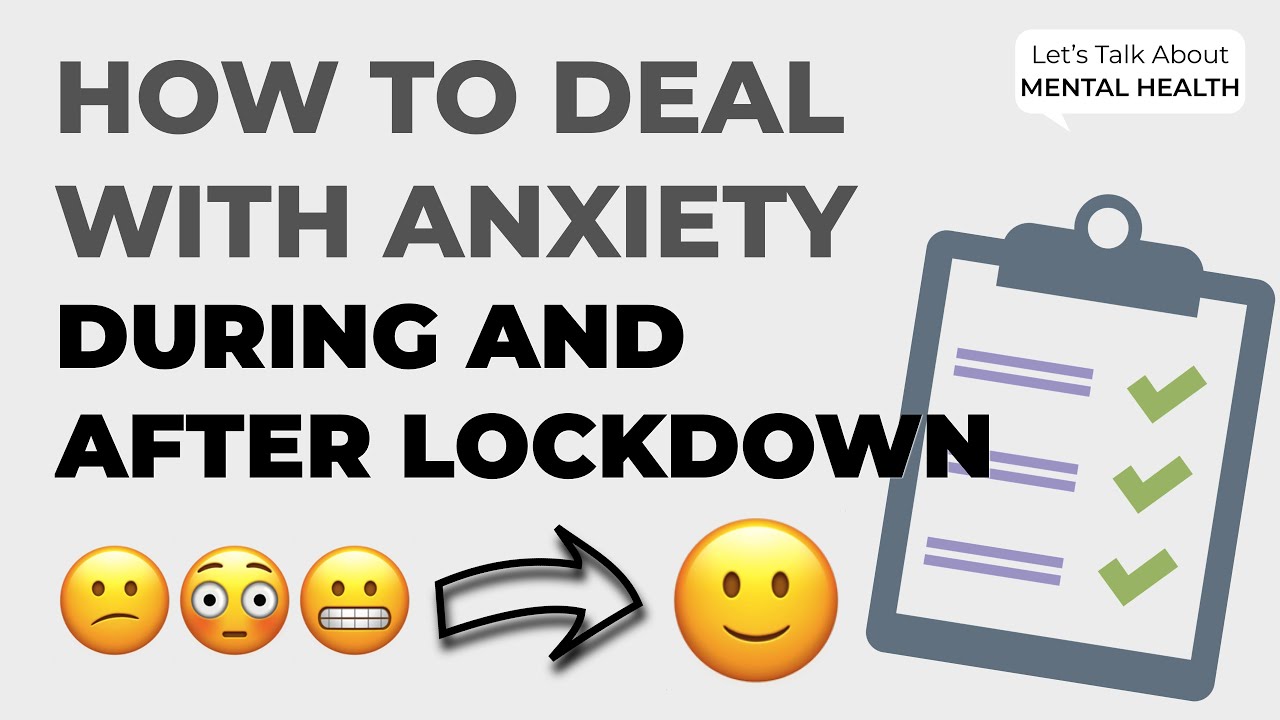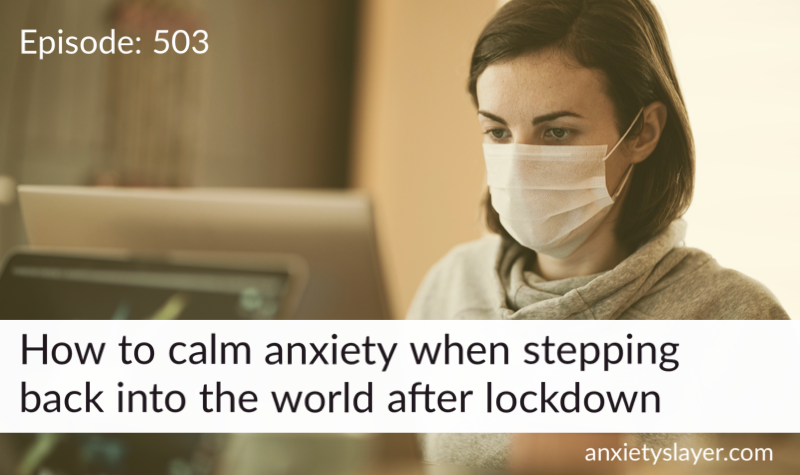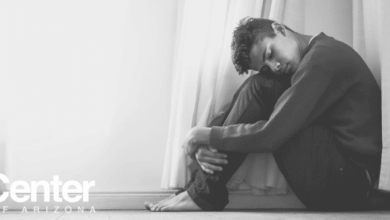
5 simple tips to help manage social anxiety after leaving lockdown. Lockdowns drastically altered our social landscapes, and re-entering the world can feel overwhelming. This post offers practical advice to navigate the anxieties that may arise from increased social interaction after periods of isolation. We’ll explore the specific challenges of navigating social situations, from fear of crowds to difficulty initiating conversations, and equip you with actionable strategies for building confidence and managing anxiety.
Understanding the potential increase in social anxiety after lockdown periods is crucial. Prolonged isolation can impact social skills and lead to specific anxieties, like fear of judgment or interacting with crowds. This post will delve into these anxieties and equip you with practical tools for overcoming them.
Understanding Social Anxiety Post-Lockdown
The world has re-emerged from a period of unprecedented isolation, and with it comes a new set of challenges. For many, the return to social interaction has been met with a resurgence of social anxiety. This phenomenon is not surprising, as prolonged periods of limited social contact can significantly impact our social skills and comfort levels. This article delves into the complexities of social anxiety post-lockdown, exploring its causes, symptoms, and potential triggers.Prolonged isolation, a defining characteristic of lockdown periods, can weaken social skills and comfort.
Individuals accustomed to limited social interaction may find it challenging to navigate the complexities of everyday social situations. This can manifest as a heightened fear of judgment, difficulty initiating conversations, or an overwhelming sense of anxiety in crowded spaces. Understanding these potential anxieties is the first step towards effective management and recovery.
Potential Increase in Social Anxiety
The enforced isolation of lockdown periods has undeniably impacted individuals’ social lives. A significant portion of the population experienced a decline in social interaction and the practice of social skills, impacting their ability to confidently navigate social situations. This can result in a heightened sensitivity to social cues, leading to an increased sense of vulnerability and fear of judgment.
The loss of routine social interactions, like casual conversations or spontaneous gatherings, contributed to a decline in confidence and proficiency in social situations.
Examples of Specific Anxieties
Individuals experiencing social anxiety post-lockdown may face various specific anxieties. These include a fear of interacting with crowds, difficulty initiating conversations, and a fear of being judged or scrutinized by others. The absence of regular social interaction can lead to a diminished sense of comfort and ease in social settings. For instance, someone accustomed to online interactions might find it daunting to engage in face-to-face conversations, while others might feel overwhelmed by the sheer volume of people in public spaces.
Figuring out 5 simple tips to help manage social anxiety after lockdown can be tricky, but it’s totally doable! I found that revisiting my quarantine beauty routine, like the one detailed in beauty routine in quarantine , helped me feel more grounded and confident. It’s all about building new habits, and a consistent routine can be a great tool for feeling more prepared for the world outside again.
The specific anxieties experienced will vary depending on individual experiences and pre-existing conditions.
Psychological Impact of Prolonged Isolation
Prolonged isolation can have a profound psychological impact. A lack of social interaction can lead to feelings of loneliness, isolation, and a decline in social skills. Individuals may experience difficulty reading social cues, initiating conversations, or expressing themselves effectively in social settings. The absence of regular social interaction can lead to a decreased ability to regulate emotions in social situations, increasing the likelihood of experiencing heightened anxiety.
This can impact self-esteem and overall well-being.
Common Triggers for Social Anxiety
Common triggers for social anxiety in individuals isolated during lockdown can include crowds, unfamiliar social settings, or any situation that evokes feelings of vulnerability or judgment. These triggers are often deeply rooted in the individual’s pre-existing anxieties and the specific experiences they had during the isolation period. A simple interaction, like asking a question in a meeting, might trigger significant anxiety for someone who felt isolated and disconnected from others.
Comparison of Social Anxiety Before and After Lockdown
| Factor | Social Anxiety Before Lockdown | Social Anxiety After Lockdown |
|---|---|---|
| Triggers | Typically related to specific social situations, such as public speaking or meeting new people. | May include broader social situations (crowds, unfamiliar environments) or the fear of repeating past experiences of isolation and discomfort. |
| Symptoms | Often manifested in physical symptoms (e.g., sweating, trembling), and feelings of self-consciousness. | May involve a wider range of symptoms, including avoidance behaviors, difficulty initiating conversations, or an overwhelming sense of anxiety in social settings. |
| Impact | May limit social interactions, but generally doesn’t severely disrupt daily life. | Could significantly impact daily life, leading to avoidance of social situations and feelings of inadequacy. |
Recognizing the Symptoms of Social Anxiety

Navigating the world post-lockdown can be challenging, especially for those experiencing social anxiety. Recognizing the symptoms is the first step towards managing them effectively. Understanding the subtle differences between normal social awkwardness and a more pronounced anxiety response is crucial. This section will delve into the various manifestations of social anxiety, differentiating them from everyday nervousness and other anxiety disorders.
Physical Symptoms of Social Anxiety
Physical symptoms often accompany social anxiety, sometimes serving as early warning signs. These physical responses can range from mild discomfort to debilitating sensations. Understanding these physical manifestations can help individuals recognize and manage their anxiety more effectively.
- Increased heart rate and rapid breathing: A racing heart and shortness of breath are common physical responses to social situations that trigger anxiety. This heightened physiological arousal can be a significant source of discomfort and make it difficult to engage in social interactions.
- Muscle tension and trembling: Physical tension, often manifesting as muscle stiffness or trembling, is another frequent physical symptom. This tension can lead to discomfort and an inability to relax, making social situations even more distressing.
- Sweating and blushing: Excessive sweating, particularly in the palms or face, and blushing can occur in response to social anxiety. These physical reactions can be quite noticeable and contribute to feelings of self-consciousness and embarrassment.
- Nausea and dizziness: Some individuals experience digestive issues such as nausea or dizziness during or before social situations. These physical symptoms can significantly impact their ability to participate and enjoy social interactions.
Emotional Symptoms of Social Anxiety
Emotional symptoms often accompany and amplify the physical manifestations of social anxiety. These feelings are often difficult to control and can lead to avoidance behaviours.
- Fear of judgment and criticism: A core element of social anxiety is the intense fear of being judged or criticized by others. This fear can lead to avoidance behaviours and a reluctance to engage in social interactions.
- Self-consciousness and embarrassment: Individuals with social anxiety often experience heightened self-consciousness, leading to feelings of embarrassment and a preoccupation with how they appear to others.
- Worry and apprehension: Persistent worry and apprehension about social situations are common emotional symptoms. These anxious thoughts can build up and intensify the overall experience of social anxiety.
- Panic attacks: In severe cases, social anxiety can trigger panic attacks, characterized by intense fear, rapid heart rate, shortness of breath, and a sense of impending doom. These attacks can significantly disrupt daily life and require professional intervention.
Behavioral Symptoms of Social Anxiety
Behavioral patterns are often indicative of social anxiety. These patterns can range from subtle avoidance behaviours to more pronounced withdrawal strategies.
- Avoidance of social situations: One of the most common behavioral responses to social anxiety is avoiding social situations altogether. This avoidance can be a coping mechanism but can also limit opportunities for social interaction and growth.
- Difficulty initiating conversations: Individuals with social anxiety may find it challenging to initiate conversations or participate in group discussions. This can stem from fear of being judged or criticized.
- Over-preparation and excessive self-criticism: Some individuals with social anxiety engage in extensive preparation for social events, often accompanied by harsh self-criticism and a focus on potential negative outcomes.
- Withdrawal from social interactions: In more severe cases, social anxiety can lead to withdrawal from social interactions, resulting in feelings of isolation and loneliness.
Differentiating Social Anxiety from Normal Social Awkwardness
Social awkwardness is a common experience for many people, characterized by occasional feelings of discomfort or uncertainty in social settings. Social anxiety, however, is a more pervasive and debilitating condition.
- Intensity and duration: Social awkwardness is typically short-lived and easily managed, while social anxiety involves persistent and intense fear and distress in social situations.
- Impact on daily life: Social awkwardness doesn’t significantly interfere with daily life, while social anxiety often leads to avoidance of social activities, impacting work, relationships, and overall well-being.
- Physical and emotional symptoms: Social awkwardness rarely triggers significant physical or emotional distress, unlike social anxiety, which is often accompanied by a range of unpleasant symptoms.
Severity Levels of Social Anxiety Symptoms
| Symptom | Mild | Moderate | Severe |
|---|---|---|---|
| Physical Symptoms | Slight nervousness, increased heart rate | Significant physical discomfort, rapid breathing, sweating | Panic attacks, debilitating physical symptoms |
| Emotional Symptoms | Mild self-consciousness | Intense fear of judgment, worry | Overwhelming fear, panic |
| Behavioral Symptoms | Slight avoidance of certain social situations | Significant avoidance of social interactions, difficulty initiating conversations | Complete withdrawal from social life |
Comparing Social Anxiety with Other Anxiety Disorders
Social anxiety is distinct from other anxiety disorders, though there can be overlap.
- Generalized Anxiety Disorder (GAD): GAD involves excessive worry about various aspects of life, while social anxiety is specifically focused on social situations.
- Panic Disorder: Panic disorder is characterized by recurring panic attacks, whereas social anxiety can sometimes trigger panic attacks in social situations.
- Specific Phobias: Specific phobias involve fear of a particular object or situation, while social anxiety is more generalized, encompassing various social contexts.
Practical Tips for Managing Social Anxiety
Navigating social situations after a period of lockdown can be challenging, especially if you’ve experienced social anxiety. This heightened sensitivity can stem from a lack of practice in social interactions and a general feeling of unease in unfamiliar settings. Understanding these feelings is the first step to managing them effectively.Feeling anxious in social situations is a common experience, and it’s crucial to remember that you’re not alone.
These practical tips are designed to help you navigate social situations with greater ease and confidence, equipping you with strategies to manage your anxiety and build your resilience.
Gradual Exposure
Building confidence in social situations requires a systematic approach. Sudden exposure to large groups or unfamiliar settings can be overwhelming. A gradual exposure strategy allows you to progressively increase your social interactions, starting with less demanding situations and gradually working your way up to more challenging ones.This involves identifying specific situations that trigger anxiety and systematically exposing yourself to them in small steps.
For example, if a coffee shop causes anxiety, start by observing the environment, then sit alone, then order a drink, and finally interact with a barista. Each step builds confidence and reduces the perceived threat.
Cognitive Restructuring
Negative thought patterns can significantly exacerbate social anxiety. Cognitive restructuring involves identifying and challenging these negative thoughts, replacing them with more realistic and positive ones.For example, if you anticipate a social interaction will go badly, try to reframe your thoughts by focusing on past successful social encounters. Consider the possibility that the interaction might be neutral or even positive.
By consciously adjusting your thought processes, you can shift your perspective and reduce anxiety.
Relaxation Techniques, 5 simple tips to help manage social anxiety after leaving lockdown
Deep breathing exercises, mindfulness, and progressive muscle relaxation are valuable tools for managing anxiety. These techniques help calm your nervous system and reduce physiological symptoms of anxiety.For instance, deep breathing exercises can be practiced anywhere, anytime. In a social setting, you can discreetly take a few deep breaths to regulate your heart rate and calm your nerves. Mindfulness exercises, focusing on the present moment, can also be used in social situations to help center yourself and reduce the intensity of anxious thoughts.
Building a Support System
Connecting with supportive individuals can significantly lessen the impact of social anxiety. A supportive network can provide encouragement, understanding, and practical assistance during challenging social situations.Seek out individuals who understand and empathize with your experience. This could be a friend, family member, therapist, or support group. Having someone to confide in and lean on can provide a crucial buffer against anxiety triggers.
Self-Compassion and Acceptance
Self-compassion and acceptance are crucial for managing social anxiety. Acknowledging that social anxiety is a normal human experience and treating yourself with kindness and understanding is vital.Remember that you’re not expected to be perfect. Allow yourself to make mistakes, learn from them, and forgive yourself. Treating yourself with the same empathy and understanding you’d offer a friend facing a similar challenge is essential.
Acceptance involves recognizing that social anxiety is a part of your experience, not a reflection of your worth or value.
| Tip | Pros | Cons |
|---|---|---|
| Gradual Exposure | Builds confidence, reduces fear, manageable steps | Time-consuming, requires patience, potential for setbacks |
| Cognitive Restructuring | Changes thought patterns, promotes positive thinking | Requires conscious effort, may not be effective for everyone, potentially time-consuming |
| Relaxation Techniques | Calms the nervous system, reduces physical symptoms, adaptable | May take practice, requires consistency, not always effective for all anxiety levels |
| Building a Support System | Provides encouragement, reduces isolation, offers perspective | Requires vulnerability, finding a supportive network may take time |
| Self-Compassion and Acceptance | Promotes self-kindness, reduces self-criticism, fosters resilience | Requires self-awareness, potential for denial of progress, may take time to implement |
Building Confidence and Social Skills

Re-entering the social world after lockdown can be daunting, especially for those with social anxiety. This stage requires a conscious effort to build confidence and improve social skills. Developing these crucial aspects can significantly reduce anxiety and lead to more fulfilling social interactions. Recognizing the importance of these skills is the first step towards building a stronger sense of self and navigating social situations more effectively.Confidence and self-esteem are closely intertwined with social anxiety.
Low self-esteem can exacerbate social anxiety, making social interactions feel more challenging. Conversely, building self-esteem can foster a more positive outlook on social situations, leading to greater comfort and ease.
So, you’re feeling a bit overwhelmed by the return to socialising after lockdown? Five simple tips can help! One crucial step is incorporating a quick daily routine like a 10 minute morning workout to boost your mood and energy levels. This, combined with mindful breathing exercises and positive self-talk, can make a real difference in managing those anxious feelings.
Focusing on these simple steps can help ease your transition back into social situations.
Strategies for Building Confidence and Self-Esteem
Building confidence involves challenging negative self-talk and focusing on personal strengths. Identifying and celebrating accomplishments, no matter how small, can significantly boost self-worth. Practicing self-compassion, understanding that everyone makes mistakes, is also crucial. This approach fosters a more forgiving and accepting attitude towards oneself.
Techniques for Improving Social Skills and Communication
Effective communication is a cornerstone of positive social interactions. Active listening, paying attention to what others are saying, and responding thoughtfully, are fundamental aspects of good communication. Practicing empathy, putting oneself in the other person’s shoes, and understanding their perspective, can foster stronger connections and reduce misunderstandings.
Activities to Promote Social Interaction and Reduce Anxiety
Engaging in social activities can help build confidence and reduce anxiety. Starting with low-pressure interactions, such as joining a book club or attending a local event, can be a good way to ease back into social situations. Volunteering, joining a sports team, or participating in online communities can also offer opportunities for interaction and build social connections.
- Joining a hobby group: Participating in activities you enjoy can create a supportive environment where you can connect with like-minded individuals. This shared interest provides a common ground for conversation and interaction, fostering a sense of belonging.
- Taking a class: Learning a new skill or subject matter can be an enriching experience. Enrolling in a class offers a structured environment for interaction and allows for the development of social skills within a supportive setting.
- Attending community events: Local events, such as festivals or workshops, provide opportunities for social interaction in a relaxed atmosphere. These events often offer a sense of community and connection with others.
The Role of Positive Self-Talk in Managing Social Anxiety
Positive self-talk plays a vital role in managing social anxiety. Replacing negative thoughts with positive affirmations can significantly alter your perception of social situations. Focusing on your strengths and capabilities can build confidence and reduce anxiety. For example, instead of thinking “I’ll mess up,” try “I can handle this.”
Navigating social situations after lockdown can be tricky, but thankfully, there are some simple tips to ease the anxiety. One way to help manage those feelings is to engage in active indoor play, which can be a fantastic outlet for pent-up energy and a great way to get back in the swing of things. Check out some top-notch options for best toys for active indoor play to help you stay entertained and energized.
This can help build confidence and ease the transition back into social situations, making those first few steps after lockdown a little less daunting.
Examples of Social Situations and Coping Strategies
Social situations can trigger anxiety. For instance, meeting new people or giving a presentation. A coping strategy for meeting new people might involve focusing on common interests to initiate conversations. To manage presentation anxiety, rehearsing the content beforehand and practicing relaxation techniques can prove helpful.
| Social Situation | Coping Strategy |
|---|---|
| Meeting new people at a party | Focus on a shared interest or activity to initiate conversation. Smile and make eye contact. |
| Giving a presentation | Prepare thoroughly. Practice your presentation beforehand. Use relaxation techniques, such as deep breathing, to manage anxiety. |
| Ordering food at a restaurant | Plan what you want to order beforehand. Take your time and ask questions if needed. |
Maintaining a Healthy Lifestyle: 5 Simple Tips To Help Manage Social Anxiety After Leaving Lockdown
Navigating the world after lockdown can be challenging, especially if you’re experiencing social anxiety. Maintaining a healthy lifestyle plays a crucial role in managing these anxieties. It’s not just about feeling better; it’s about empowering yourself to handle social situations with greater resilience. A strong foundation of physical well-being often translates to a stronger mental state.A healthy lifestyle isn’t about drastic measures, but rather consistent habits that support your overall well-being.
Taking care of your physical health is directly connected to your mental health. When your body is functioning optimally, your mind is better equipped to cope with stress and anxiety. Prioritizing sleep, nutrition, and exercise can significantly reduce anxiety symptoms and improve your ability to navigate social situations.
The Connection Between Physical and Mental Health
Physical and mental health are intrinsically linked. Studies consistently demonstrate a strong correlation between physical activity and reduced anxiety levels. When you exercise, your body releases endorphins, natural mood boosters that can help alleviate feelings of anxiety. A balanced diet, rich in essential nutrients, also contributes to a stable mood and reduced stress response. Adequate sleep is equally important, as sleep deprivation can exacerbate anxiety and impair cognitive function.
The Role of Sleep, Diet, and Exercise
A consistent sleep schedule is crucial for regulating mood and reducing anxiety. Aim for 7-9 hours of quality sleep each night. Establish a relaxing bedtime routine to signal your body that it’s time to wind down. A healthy diet rich in fruits, vegetables, and whole grains provides essential nutrients for optimal brain function and reduces inflammation, which can contribute to anxiety.
Regular exercise, even moderate intensity, can significantly impact anxiety levels. Find activities you enjoy, whether it’s walking, swimming, or dancing, and aim for at least 30 minutes most days of the week.
Healthy Coping Mechanisms for Stress and Anxiety
Developing healthy coping mechanisms is essential for managing stress and anxiety. These strategies can help you navigate challenging situations with greater composure. Techniques such as deep breathing exercises, meditation, and mindfulness can help regulate your emotional response to stress. Engaging in hobbies or activities you enjoy can provide a much-needed outlet for stress and promote relaxation.
- Deep breathing exercises: Slow, controlled breathing techniques can help calm the nervous system and reduce feelings of panic. Focusing on your breath can help you center yourself and ground you in the present moment, which is beneficial in managing social anxiety. For example, try inhaling deeply through your nose, holding for a few seconds, and exhaling slowly through your mouth.
Repeat several times to experience a calming effect.
- Mindfulness meditation: This practice involves focusing on the present moment without judgment. It can help you become more aware of your thoughts and feelings, reducing their power to overwhelm you. This can be particularly helpful in managing social anxiety triggers.
- Engaging in hobbies: Participating in activities you enjoy can provide a healthy outlet for stress and promote relaxation. Whether it’s painting, playing music, or gardening, these activities can offer a sense of accomplishment and help distract you from anxious thoughts.
Correlation Between Lifestyle Choices and Anxiety Levels
The following table illustrates the potential correlation between lifestyle choices and anxiety levels. It’s important to remember that individual experiences vary, and this is not a definitive guide, but rather a representation of general trends.
| Lifestyle Choice | Potential Impact on Anxiety Levels |
|---|---|
| Consistent sleep schedule (7-9 hours) | Reduced anxiety, improved mood regulation |
| Balanced diet (fruits, vegetables, whole grains) | Stable mood, reduced inflammation |
| Regular exercise (30 minutes most days) | Reduced anxiety, increased endorphins |
| Stress-reducing activities (meditation, hobbies) | Improved coping mechanisms, reduced stress response |
| Poor sleep, unbalanced diet, lack of exercise | Increased anxiety, impaired cognitive function |
Seeking Support and Resources
Navigating social situations after a period of lockdown can be challenging, especially for those experiencing social anxiety. It’s crucial to understand that seeking help is a sign of strength, not weakness. Many individuals find that professional support, along with a strong support network, significantly improves their ability to manage social anxiety and build resilience.Overcoming social anxiety often requires a multifaceted approach.
Recognizing the need for support is a vital first step, and understanding the various resources available can empower individuals to take control of their well-being. Building a supportive network, whether through professional guidance or community connections, can significantly impact the journey towards managing social anxiety effectively.
Benefits of Professional Help
Seeking professional help for social anxiety can provide individuals with a structured and personalized approach to managing their symptoms. A therapist can offer specialized strategies tailored to individual needs, helping to identify triggers, develop coping mechanisms, and build confidence in social situations. Therapy provides a safe space to explore underlying anxieties and develop healthier thought patterns. Furthermore, therapists can help individuals understand the root causes of their social anxiety, leading to long-term improvements in well-being.
Resources for Individuals with Social Anxiety
Numerous resources are available to support individuals experiencing social anxiety. These include therapists specializing in anxiety disorders, support groups, and online platforms offering self-help tools and information. Finding a therapist with experience in treating social anxiety is crucial, and online resources can provide a starting point for exploring options. Support groups offer a space for individuals to connect with others who understand their experiences, providing a sense of community and shared understanding.
These groups can be invaluable in fostering coping strategies and reducing feelings of isolation.
Importance of Building a Support Network
A strong support network is essential for managing social anxiety. Friends, family, and supportive individuals can provide encouragement, understanding, and a sense of belonging. Sharing experiences and coping strategies with others can be empowering and create a safe environment for practicing new skills. This network can offer practical support in navigating social situations and provide emotional encouragement during challenging moments.
Potential Support Systems Within the Community
Community resources can play a significant role in supporting individuals with social anxiety. Local mental health organizations often offer support groups, workshops, and resources to connect individuals with the necessary support. Community centers, libraries, and social clubs can also provide opportunities to connect with others and build a sense of belonging. Furthermore, reaching out to trusted community leaders or mentors can offer guidance and encouragement.
Different Types of Therapy and Potential Effectiveness
| Therapy Type | Potential Effectiveness for Social Anxiety |
|---|---|
| Cognitive Behavioral Therapy (CBT) | CBT is widely recognized for its effectiveness in treating social anxiety. It focuses on identifying and changing negative thought patterns and behaviors contributing to anxiety. This approach can help individuals develop healthier coping mechanisms and challenge unhelpful beliefs. |
| Exposure Therapy | Exposure therapy gradually exposes individuals to feared social situations, helping them to build tolerance and reduce anxiety responses. This can be particularly helpful for individuals who avoid social situations due to intense fear. |
| Acceptance and Commitment Therapy (ACT) | ACT helps individuals accept their thoughts and feelings without judgment, while focusing on values-driven actions. This approach can be valuable in reducing the tendency to become overwhelmed by anxious thoughts and promoting a more mindful approach to social interactions. |
| Dialectical Behavior Therapy (DBT) | DBT combines CBT techniques with mindfulness and emotional regulation skills. It can help individuals manage intense emotions, improve interpersonal skills, and reduce impulsive behaviors related to social anxiety. |
| Psychodynamic Therapy | Psychodynamic therapy delves into the unconscious mind to explore the root causes of social anxiety, such as past experiences or unresolved conflicts. This approach can help individuals understand the underlying factors contributing to their anxiety and develop strategies for emotional regulation. |
Conclusion
This post has explored 5 simple tips to help manage social anxiety after lockdown, offering practical strategies for navigating the challenges of reintegrating into social life. Remember, managing social anxiety is a journey, not a destination. Be patient with yourself, celebrate small victories, and don’t hesitate to seek support when needed. By understanding the triggers, recognizing the symptoms, and implementing these practical tips, you can build resilience and navigate social situations with greater ease and confidence.





